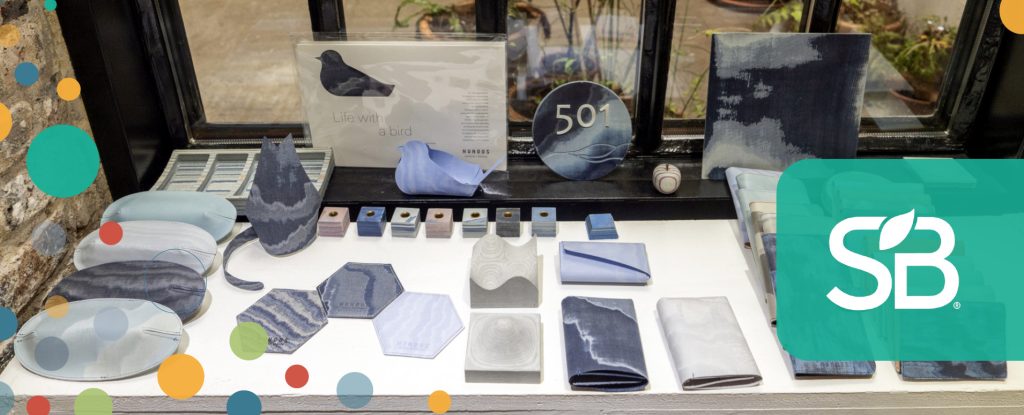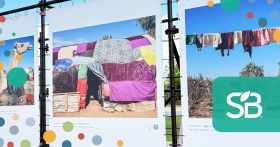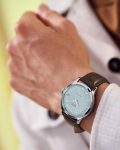Venerable Japanese Company Goes Circular with Versatile, Upcycled Textile
4 min read
SUSCOM
Published 1 day ago.
About a 4 minute read.
Image: NUNOUS
Sponsored Content
/ This article is sponsored by
SUSCOM.
Meet NUNOUS — a brand-new, radically versatile material made from fabric waste — developed by fabric-dyeing giant Seishoku Co., Ltd.
The United Nations Conference on Trade and Development (UNCTAD) has
identified fashion as the second-most-polluting industry on the planet, which
has drawn worldwide critical attention to the enormous amount of waste that is
connected to clothing and textiles. Aside from the obvious waste resulting from
unsold and end-of-life clothes that get thrown away, the industry also generates
waste behind the scenes during manufacturing processes such as spinning, cutting
and dyeing.
To address the latter, fabric-dyeing company Seishoku Co.,
Ltd developed a brand-new material that reduces
fabric waste and unlocks new possibilities.
A new material born from textile waste and biopolymers
Remarkably versatile, NUNOUS feels soft to the touch,
yet is solid and heavy. The surface boasts layers of color that create complex
and unique combinations. Able to resemble fabric, leather and even stone, NUNOUS
is a new type of material gaining attention for its wide array of potential uses
ranging from decorative objects to interior finishes.
A new guidebook for accelerating your sustainable business transformation
Truly sustainable businesses address the many interconnected social and environmental challenges that brands and their customers face — and strive for net-positive outcomes and impacts, in addition to growth. SB’s latest guidebook can help your company navigate the path toward enhanced brand sustainability with key insights, actionable steps and a holistic framework that defines a roadmap for good growth.
It was developed by Seishoku Co — a material dyeing and processing company founded in 1880 in Okayama, a quiet rural prefecture in the south
of Japan.
The idea for NUNOUS began with the out-of-spec products that occur regularly
during textile manufacturing. Seishoku dyes up to as much as 50 kilometers of
fabric each day; and inevitable imperfections result in some products that
cannot be sold. While these products may only make up 1-2 percent of their total
output, they found it difficult to throw away fabric that was otherwise
beautifully dyed simply because of small flaws or uneven color. Seishoku also
wanted to avoid the environmental impact and lost resources that result from
fabric waste, and thus began searching for a method to recycle these materials
while preserving their beautiful colors. Working with the Industrial Technology
Center of Okayama Prefecture, they
developed a lamination technique that allows hundreds of sheets of fabric to be
layered between resin film and then heated and pressed into sheets. To even
further reduce the product’s environmental impact, they utilized biopolymer
resin made from non-edible sugarcane. The result is NUNOUS — a new type of
material that gives waste fabric a second life.
Possibilities as limitless as customers’ imaginations
‘Kokeshi’ dolls made from layers of NUNOUS | Image credit: NUNOUS
In the five years since it was developed in 2018, NUNOUS has been incorporated
into many projects and places around the world beyond its humble Okayama roots.
The material can be made from a wide variety of sources — including cotton, hemp
and wool textiles. One company has taken advantage of this to upcycle its old
work uniforms into NUNOUS decorations for its office interior. In another case,
an apparel brand collected fabric that was cut from trousers to make shorts, and
used it to create NUNOUS — out of which it produced new clothes that were
exhibited at Paris Fashion Week. As architects and other companies beyond
the fashion industry put greater focus on sustainability, it is hoped that
NUNOUS will help them upcycle waste in a multitude of ways.
Seishoku is currently working on changes to NUNOUS that will make it a viable
material for even wider applications — including improving its fire resistance
and aiming to increase the maximum size of each sheet above the current
limitation of 450 x 250 mm. The ability to create large NUNOUS sheets that clear
fire-safety standards will dramatically increase its potential for use as
elements such as wallpaper.
At the factory where test pieces are produced, Seishoku president Akira
Himei told us more.
“The majority of ideas on how to utilize NUNOUS come from customers who are
looking to use sustainable materials,” he said. “If wallpaper is too difficult,
they say, then how about using it in lighting or signage? They come up with
applications that highlight the unique combinations of colors, things we would
have never thought of. Giving NUNOUS this kind of exposure in places where it’s
seen by many people will hopefully also create chances for the general public to
think about the fashion and textile industries’ waste problem.”
Fueled by motivations and ideas such as these, this venerable local company will
continue expanding its global efforts to create a sustainable future.





